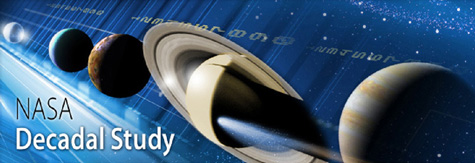
The National Research Council (NRC) is conducting a series of “town hall” meetings across the country on Wednesday, April 6, to roll out the Planetary Science Decadal Survey 2013-2022, and the McDonnell Center for the Space Sciences at Washington University in St. Louis will be hosting one of the events.
The survey was conducted by the NRC, which organizes studies to provide a science community consensus on key questions posed by U.S. government agencies.
Once every decade, the National Aeronautics and Space Administration (NASA) asks the NRC to look out 10 or more years into the future and prioritize research areas and space missions. Research priorities are selected through a rigorous review that includes extensive input from the planetary science community.
The results of the NRC survey originally were presented at the 42nd Lunar and Planetary Science Conference in Houston March 7.
The WUSTL event takes place at 7 p.m. Wednesday, April 6, in Room 201, Crow Hall. It will consist of a one-hour presentation by Amy Simon-Hall of NASA’s Goddard Space Flight Center, who was a member of the survey’s steering committee, followed by a one-hour question-and-answer period.
It is free and open to the public.
NASA’s first priority, according to the survey, is the Mars Astrobiology Explorer Cacher (MAX-C), a mission to Mars that could help determine whether the planet ever supported life.
The second priority for large-scale planetary missions is a mission to Jupiter’s icy moon Europea and its subsurface ocean — one of the most promising environments in the solar system for supporting life.
The third priority for large missions is the Uranus Orbiter and Probe mission to investigate that planet’s interior structure, atmosphere and composition.
For medium-size missions, the report recommends that NASA select two new missions to be included in its New Frontiers program for smaller, less expensive missions. Since its inception in 2003, the program has initiated two missions: one to Pluto and a second to Jupiter’s moon Juno.
NASA is in the process of selecting a third New Frontiers mission. Among the candidates is a WUSTL-led mission called MoonRise, which undergoes its final NASA review at the Jet Propulsion Laboratory April 18.
The MoonRise lander, unmanned and robotically controlled, would scoop up about two pounds of pea-sized lunar rocks from deep in the Moon’s crust and return them to Earth for further analysis.
Bradley L. Jolliff, PhD, research professor of earth and planetary sciences in Arts & Sciences at Washington University, is principal investigator for the proposed mission.
For more information on the survey, visit solarsystem.nasa.gov/2013decadal/index.cfm.
For a campus map, visit wustl.edu/community/visitors/maps/index.html.
For more information on the event, mcss.wustl.edu/events/6-or-more.